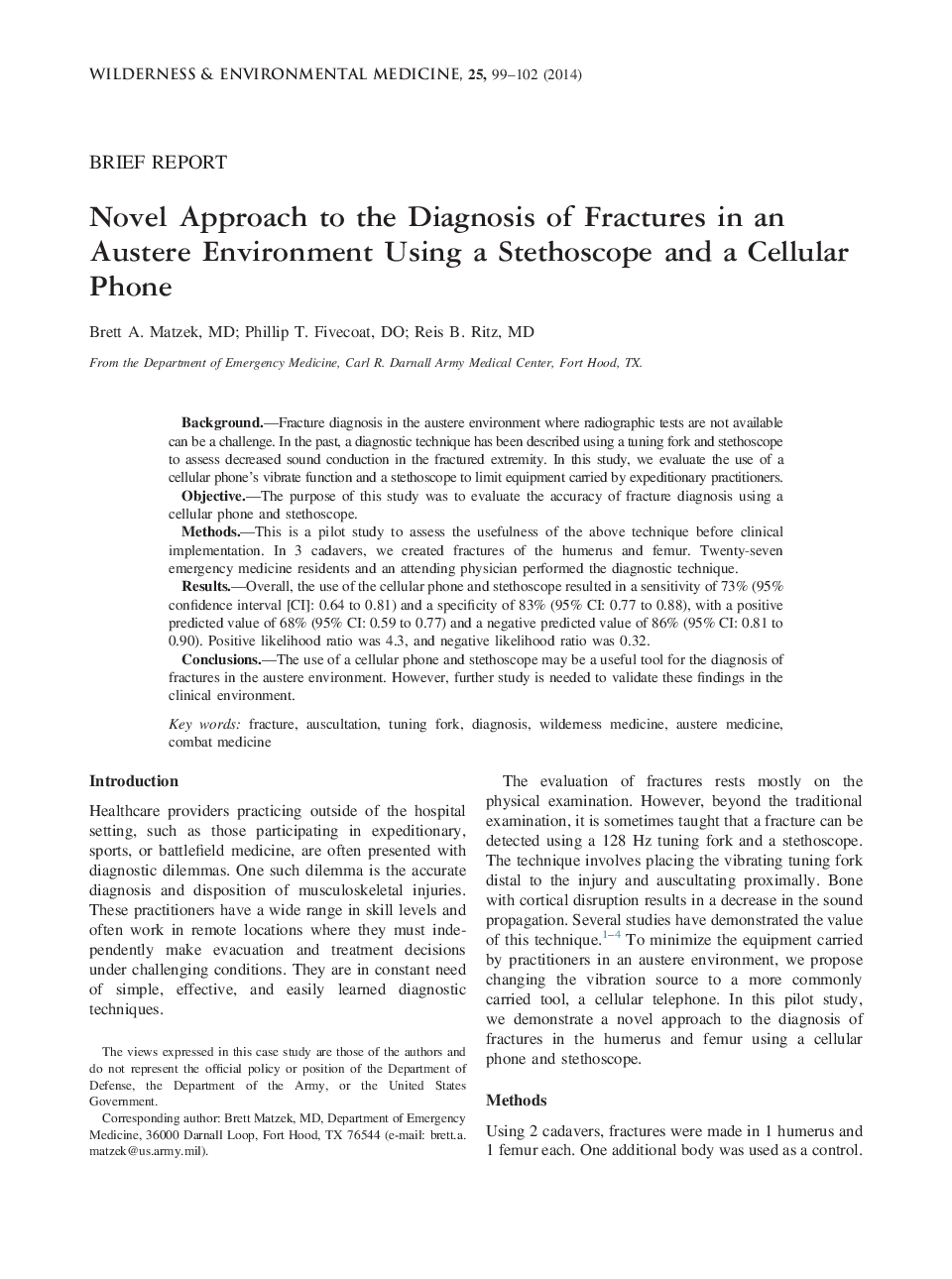| Article ID | Journal | Published Year | Pages | File Type |
|---|---|---|---|---|
| 2614153 | Wilderness & Environmental Medicine | 2014 | 4 Pages |
BackgroundFracture diagnosis in the austere environment where radiographic tests are not available can be a challenge. In the past, a diagnostic technique has been described using a tuning fork and stethoscope to assess decreased sound conduction in the fractured extremity. In this study, we evaluate the use of a cellular phone’s vibrate function and a stethoscope to limit equipment carried by expeditionary practitioners.ObjectiveThe purpose of this study was to evaluate the accuracy of fracture diagnosis using a cellular phone and stethoscope.MethodsThis is a pilot study to assess the usefulness of the above technique before clinical implementation. In 3 cadavers, we created fractures of the humerus and femur. Twenty-seven emergency medicine residents and an attending physician performed the diagnostic technique.ResultsOverall, the use of the cellular phone and stethoscope resulted in a sensitivity of 73% (95% confidence interval [CI]: 0.64 to 0.81) and a specificity of 83% (95% CI: 0.77 to 0.88), with a positive predicted value of 68% (95% CI: 0.59 to 0.77) and a negative predicted value of 86% (95% CI: 0.81 to 0.90). Positive likelihood ratio was 4.3, and negative likelihood ratio was 0.32.ConclusionsThe use of a cellular phone and stethoscope may be a useful tool for the diagnosis of fractures in the austere environment. However, further study is needed to validate these findings in the clinical environment.
